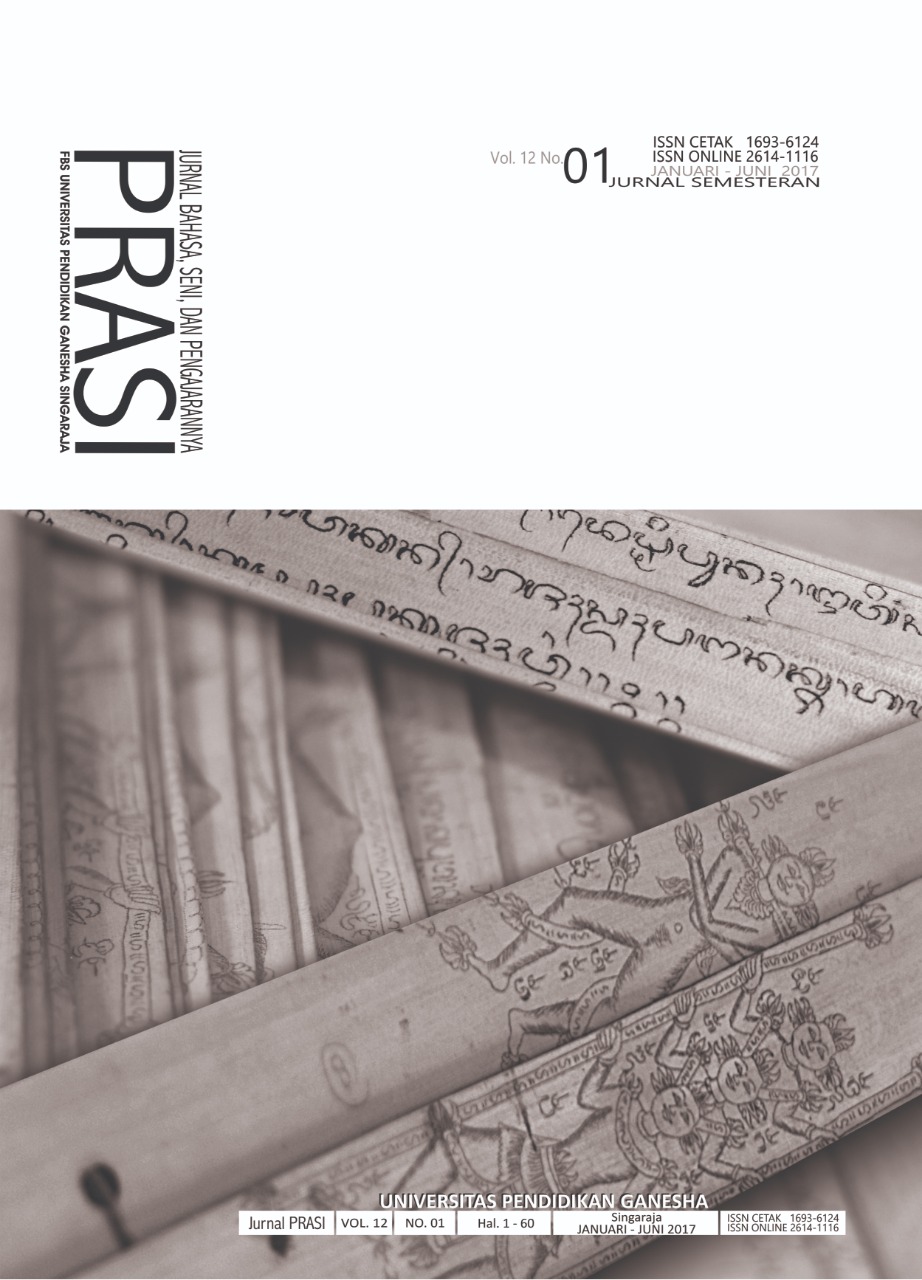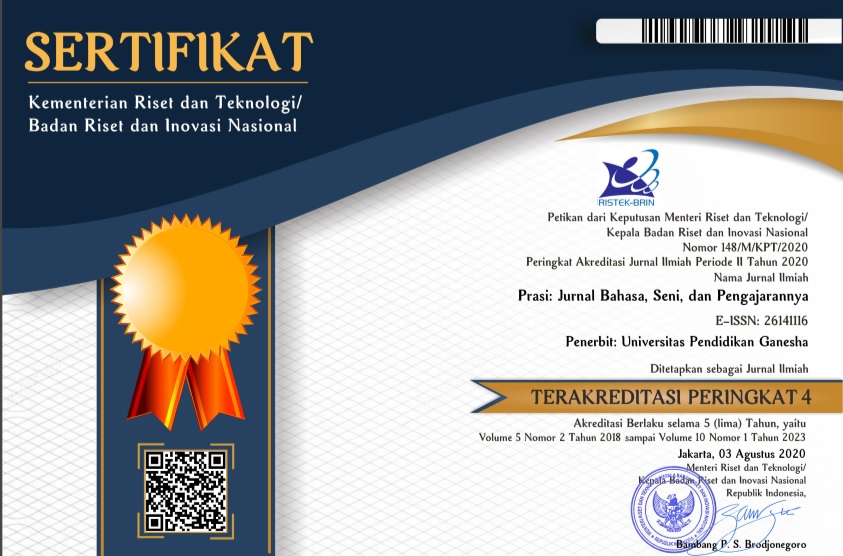AN ANALYSIS OF TEACHERS’ NON-VERBAL COMMUNICATION IN EFL CLASSROOM AT SMP NEGERI 3 BANJAR
DOI:
https://doi.org/10.23887/prasi.v12i01.13912Abstract
This study was aimed at (1) analyzing kinds of non-verbal communications used by English teachers during the teaching and learning process, (2) revealing what kinds of teachers’ non-verbal communications affect students’ motivation during the learning process in the classroom, (3) discussing the contribution of non-verbal communications in English education. This study was a descriptive qualitative study conducted at SMPN 3 Banjar. The data were collected by video recording, questionnaire administration, and interviewing. There were 2 English teachers involved as the subject of this research, and 40 students of eighth grade in different classes were involved. The results of the study indicate teachers’ non-verbal communication in SMPN 3 Banjar meets the seventh kinds of non-verbal communication proposed by Burgoon, Buller, and Woodall, (1994) as cited in Birjandi and Nushi (2014). It was also found that there are some kinds of non-verbal communication that affect students’ motivation, namely facial expression, body movement, gestures, proxemics (proximity), haptics (touch), eye contact, and paralanguage. Gestures and paralanguage are considered as non-verbal communication that gives contribution to English education.Downloads
Published
2017-06-27
Issue
Section
Articles
License
Authors who publish with Prasi agree to the following terms:- Authors retain copyright and grant the journal the right of first publication with the work simultaneously licensed under a Creative Commons Attribution License (CC BY-SA 4.0) that allows others to share the work with an acknowledgment of the work's authorship and initial publication in this journal
- Authors are able to enter into separate, additional contractual arrangements for the non-exclusive distribution of the journal's published version of the work (e.g., post it to an institutional repository or publish it in a book), with an acknowledgment of its initial publication in this journal.
- Authors are permitted and encouraged to post their work online (e.g., in institutional repositories or on their website) prior to and during the submission process, as it can lead to productive exchanges, as well as earlier and greater citation of published work. (See The Effect of Open Access)


.png)
.png)









